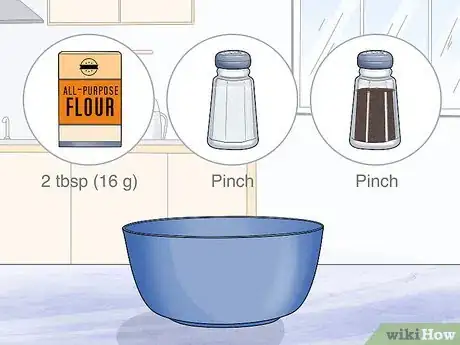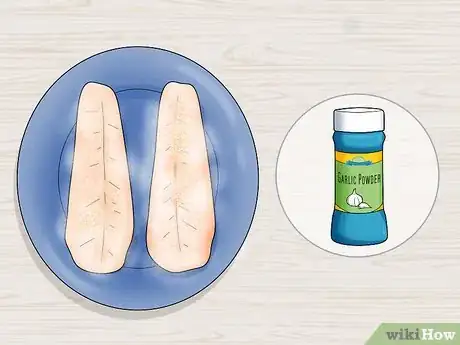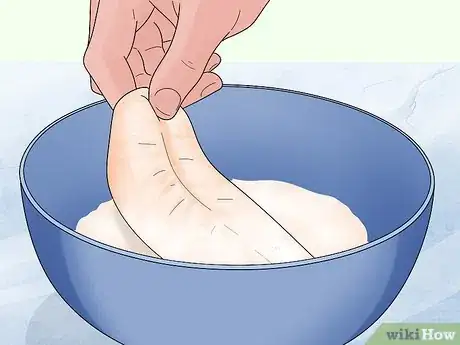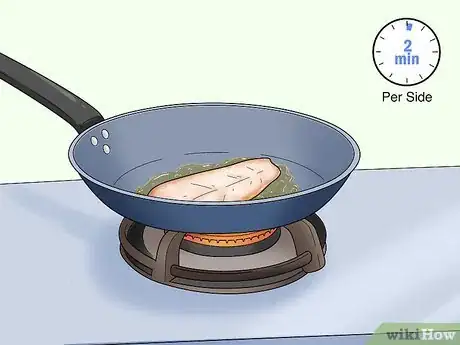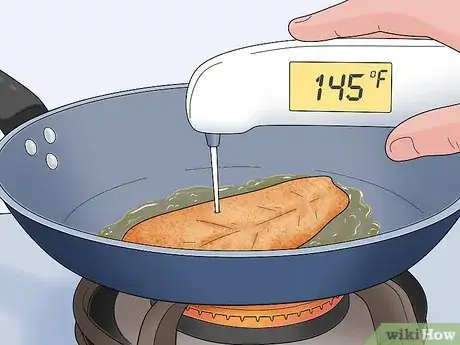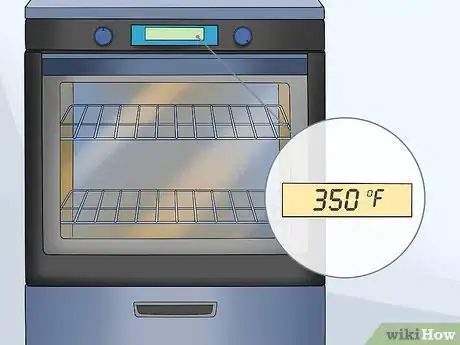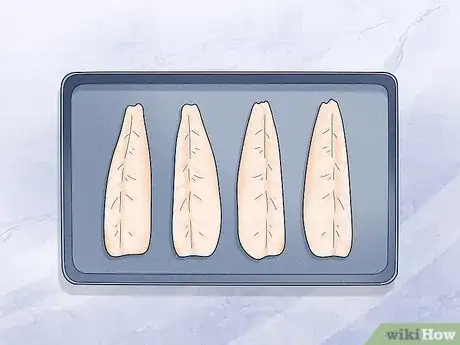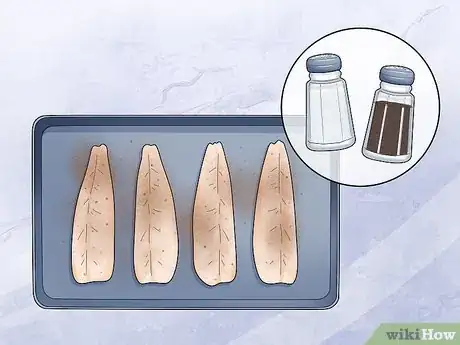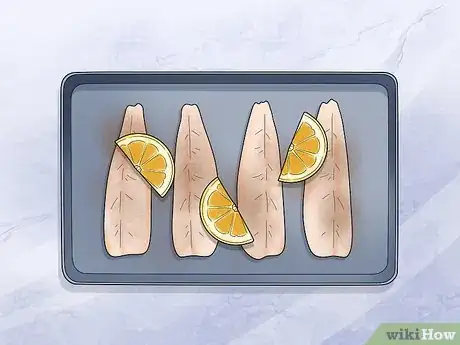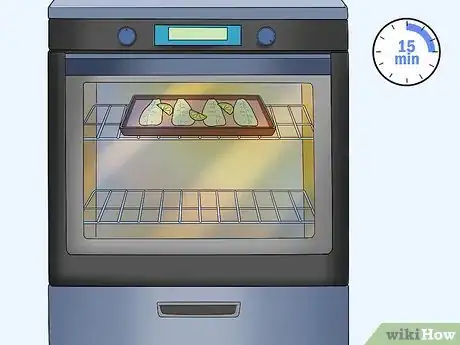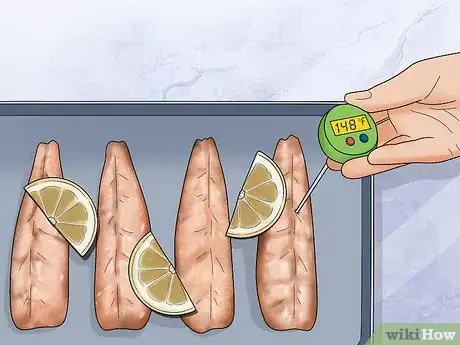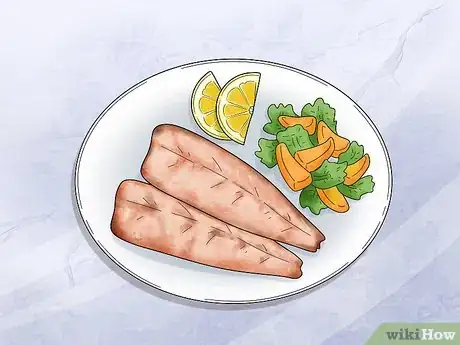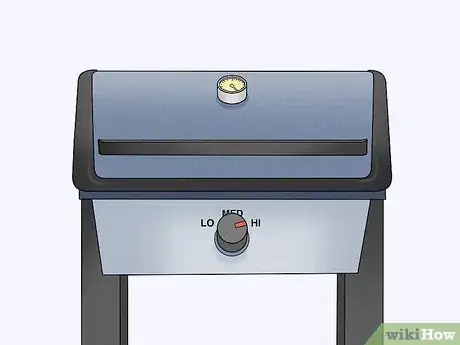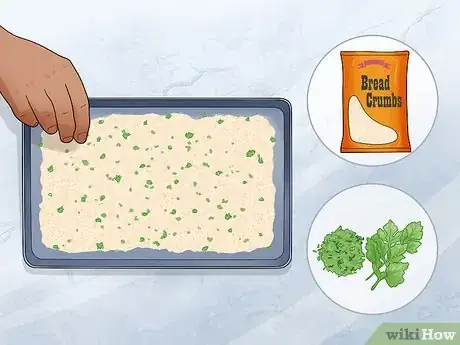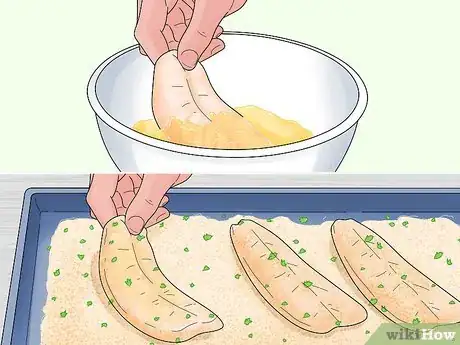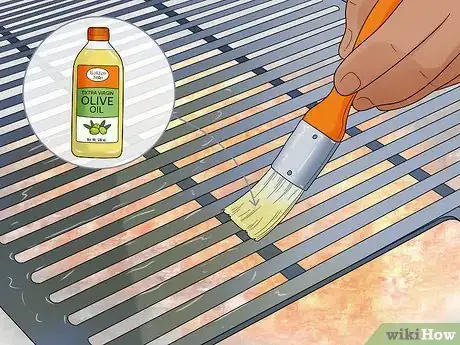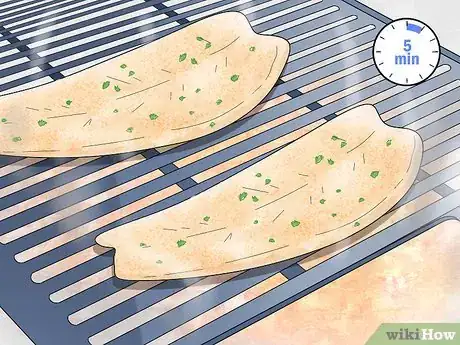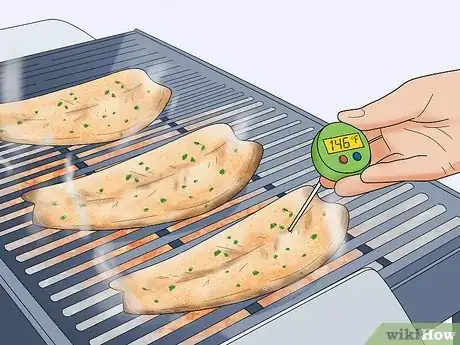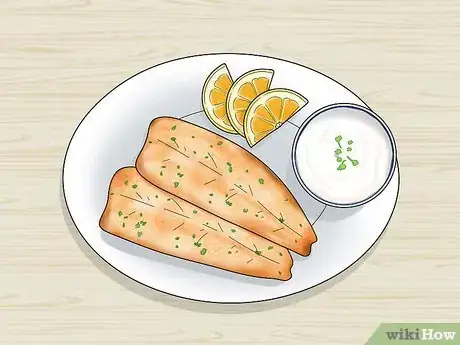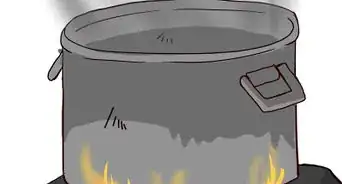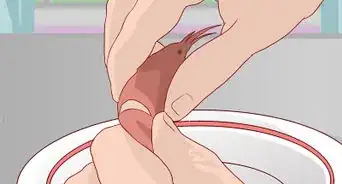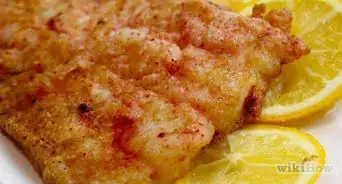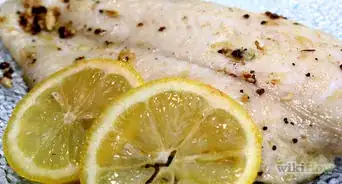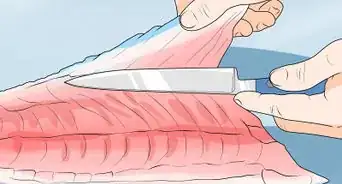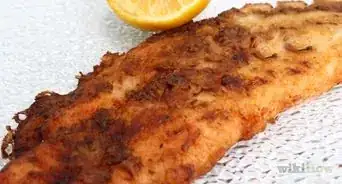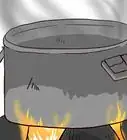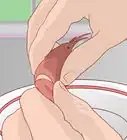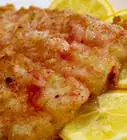This article was co-authored by Marrow Private Chefs and by wikiHow staff writer, Hunter Rising. Marrow Private Chefs are based in Santa Rosa Beach, Florida. It is a chefs’ collaborative comprised of an ever-growing number of chefs and culinary professionals. Though regionally influenced primarily by coastal, traditional southern, cajun, and creole styles and flavors, the chefs at Marrow have a solid background in all types of cuisine with over 75 years of combined cooking experience.
There are 13 references cited in this article, which can be found at the bottom of the page.
This article has been viewed 60,882 times.
If you’re looking to add more fish into your diet but want something that’s really versatile, flathead is a great choice for you to try. Flathead is a tasty and light whitefish that pairs well with many other ingredients, so you can prepare it in a variety of ways. We’ve chosen a few simple and delicious recipes you can make so you can enjoy an amazing meal!
Ingredients
- 12–16 flathead fillets
- 2 tablespoons (16 g) of flour
- 2–4 teaspoons (6–12 g) of garlic powder
- 1 teaspoon (4.9 ml) of olive oil
- Pinch of salt
- Pinch of pepper
Makes 4 servings
- 4 flathead fillets
- 2 small lemons
- 2 tablespoons (30 ml) of olive oil
- Pinch of salt
- Pinch of ground pepper
Makes 4 servings
- 16 flathead tails or fillets
- 7 ounces (200 g) of breadcrumbs
- 2 cups (55 g) of fresh chopped parsley
- 3 eggs
Makes 4 servings
Steps
Pan-Fried Flathead
-
1Combine salt, pepper, and flour in a bowl. Measure out 2 tablespoons (16 g) of flour and pour it into a large mixing bowl. Add pinches of salt and pepper until you’re happy with the seasoning. Then, stir the ingredients together until they’re thoroughly combined.[1]
- The amount of spices you add to the coating all depends on your preferences, so add as much or as little seasoning as you want.
- You could also try experimenting with other herbs and spices, such as paprika or crushed coriander seeds.
- For frying, fish can also be coated in a mixture of flour, cornmeal, or breadcrumbs before frying in hot oil.For frying, coat the fish in a mixture of flour, cornmeal, or breadcrumbs before frying in hot oil
-
2Sprinkle your flathead fillets with garlic powder. Lay all of your fillets on a plate or baking tray so they’re easier to season. Evenly spread 2–4 teaspoons (6–12 g) of garlic powder over the fish to give them a stronger flavor. Flip the fillets over and spread the remaining garlic powder on the other sides.[2]Advertisement
-
3Coat your fish with your flour mixture. Transfer your fillets into the bowl with your flour mixture. Sprinkle the flour mix onto both sides of the fillets to give them a light coating. Shake off any excess flour so it doesn’t clump up while you’re cooking.[3]
- The flour will help your fish get crispy while they’re cooking.
-
4Heat olive oil in a pan over medium-high heat. Pour 1 teaspoon (4.9 ml) of olive oil into a non-stick skillet and put it on your stove. Turn the burner on medium-high heat and let the oil heat up completely. Once the oil starts bubbling and has a shimmery appearance, you’re ready to cook.[4]
- You can always use vegetable oil if you don’t have olive oil.
- Be careful cooking with oil since it could cause a fire if it gets too hot. If it does, turn off the burner right away and cover the pan.[5]
-
5Cook your fish in the pan for 3 to 4 minutes per side. Lay your fillets in the pan so they’re spaced apart, or else you’ll overcrowd them and they won’t cook evenly. Flathead fillets are usually pretty small, so they won’t take long to cook. Leave the fillets alone for 2 minutes before flipping them over with a spatula.[6]
- When you finish cooking your fish, it should easily flake apart and have opaque meat.
-
6Check the fillets with a meat thermometer to see if they’re at 145 °F (63 °C). Undercooked fish can give you foodborne illnesses, so always check the internal temperature before eating. Stick a meat thermometer into the thickest part of the fillet and wait for it to settle on a temperature. If your fish is at least 145 °F (63 °C), then you’re ready to eat.[7]
- If your fish is still underdone, leave it in the pan for another minute before checking it again.
-
7Serve your fish while it’s still hot with vegetables. Take your fish out of the pan and put it on a serving plate lined with paper towels to catch the excess oil. When you eat your fish, try pairing it with sweet potatoes, cherry tomatoes, or asparagus as a side to complete your meal.[8]
- Put any leftover fish into an airtight container and keep it in your fridge for up to 4 days.[9]
Baked Flathead
-
1Preheat your oven to 350 °F (177 °C). Move one of the oven racks into the center position so your flathead cooks evenly. Let your oven heat up completely before you start cooking.[10]
-
2Arrange your fillets on a lined baking tray. Choose a rimmed baking tray that’s large enough to fit all of your fillets and put down a layer of baking paper. Set the fillets on the tray so they have a little bit of space between them and aren’t overcrowded.[11]
- If you can’t leave space between the fish on the tray, split your fillets between multiple pans.
- Baking paper helps prevent your fish from sticking to the pan.
-
3Season the flathead with salt and pepper. Take a pinch of salt and pepper and evenly spread it over each fillet. Your seasoning depends on what you prefer, so you can add as much or as little as you want.[12]
- Try experimenting with other spices like paprika or cayenne pepper if you want some bolder flavors.
-
4Top each piece of fish with 2–3 lemon slices for added flavor. Lemon and fish are a match made in heaven and it can really bring out the flavors of your flathead. Cut thin slices from a fresh lemon and lay them on top of each fillet. As the fish cook, the lemon juice will absorb into the meat and make it tastier.[13]
- You don’t have to use lemon slices if you don’t want to.
-
5Put the flathead in your oven for 10–15 minutes. Place the tray of fish on the oven’s center rack and keep the door closed while they’re cooking. Leave the fish alone and avoid opening the oven door so they can thoroughly cook. After about 10–15 minutes, take the flathead out so you can check it.[14]
-
6Check the temperature with a meat thermometer to see if it’s over 145 °F (63 °C). Find the largest fillet on your tray and stick a meat thermometer into the thickest section. Let the thermometer settle on a temperature before checking it. If it reads over 145 °F (63 °C), then you’re finished cooking.[15]
- If your flathead is under 145 °F (63 °C), then you could get a foodborne illness from eating it. Put the fish back in your oven for another 1–2 minutes before checking it again.
-
7Enjoy your fish with a fresh salad. If you want to enjoy some fresh ingredients with your flathead, put some chopped lettuce and avocado on your plate. Top the salad with your fish and drizzle on some fresh lemon juice so you can enjoy your meal![16]
- If you have any leftover fish, you can keep it for up to 4 days in your fridge in an airtight container.[17]
Crispy Grilled Flathead
-
1Preheat your grill to high heat. Start your coals or turn on the gas for your grill so it comes to temperature. Keep the lid closed while the grill warms up so it doesn’t lose any heat.[18]
-
2Spread breadcrumbs and chopped parsley on a flat tray. Pour 7 ounces (200 g) of breadcrumbs and 2 cups (55 g) of fresh chopped parsley onto a rimmed baking tray. Mix the two together by hand or with a whisk so they’re thoroughly combined.[19]
- You can also add more seasonings to the breading, such as paprika or cayenne pepper, if you want to enhance the flavors even more.
-
3Whisk 3 eggs in a bowl. Crack your eggs into a large bowl and stir them together with a whisk. Keep mixing the yolks and whites together until they have an even consistency.[20]
-
4Dip the fish in the whisked eggs and breadcrumb mixture. Take your fillets one at a time and dunk them in the eggs until they’re coated completely. Let the excess egg drip off of the meat and before laying them on the tray with your breadcrumbs. Coat both sides of the fish with the breadcrumbs and parsley and shake off the excess. Batter up the rest of your fillets so you’re ready to cook them.[21]
- Don’t keep any leftover eggs or breadcrumbs since they’ve been contaminated with raw fish.
-
5Spread olive oil on the grill grates to prevent the fish from sticking. Dip the end of a kitchen brush in olive oil and shake off any excess so it doesn’t drip into the flames. Rub the grates with the brush so they have a thin coating of oil. The olive oil prevents your fish from getting stuck to your grill and keeps you from tearing apart your fillets.[22]
- If you don’t have olive oil, you can substitute it for any cooking oil.
-
6Cook the fish for 4 to 6 minutes on each side. Spread your fish evenly on the grates so they have a little bit of space between them. Keep the lid on your grill and leave the fish alone for 5 minutes. After that, use a spatula to flip the fish over to the other side and let them cook for another 5 minutes.[23]
- The breading will turn golden-brown and the meat should look opaque when you’re finished.
-
7Use a meat thermometer to check if the fish is over 145 °F (63 °C). Stick your thermometer into the thickest part of your fish and let the temperature settle. As long as your fish measures over 145 °F (63 °C), you can safely take it off of your grill and eat it.[24]
- If your fish is still underdone, then leave it on your grill for another 1–2 minutes before testing it again.
-
8Eat your fish with fresh lemon and tartar sauce. Take your fish off of the grill and transfer them to serving plates. Squeeze a fresh lemon wedge over the fish to give it some fresh, citrus flavors. If you want to dip the fish, make a tartar sauce to use as a condiment.[25]
- Keep any leftover fish in an airtight container inside your fridge for up to 4 days.[26]
Expert Q&A
-
QuestionWhat is the best way to prepare fish for grilling?
 Marrow Private ChefsMarrow Private Chefs are based in Santa Rosa Beach, Florida. It is a chefs’ collaborative comprised of an ever-growing number of chefs and culinary professionals. Though regionally influenced primarily by coastal, traditional southern, cajun, and creole styles and flavors, the chefs at Marrow have a solid background in all types of cuisine with over 75 years of combined cooking experience.
Marrow Private ChefsMarrow Private Chefs are based in Santa Rosa Beach, Florida. It is a chefs’ collaborative comprised of an ever-growing number of chefs and culinary professionals. Though regionally influenced primarily by coastal, traditional southern, cajun, and creole styles and flavors, the chefs at Marrow have a solid background in all types of cuisine with over 75 years of combined cooking experience.
Private Chefs Try marinating the fish in your favorite marinade or coating it with a mixture of herbs and spices.
Try marinating the fish in your favorite marinade or coating it with a mixture of herbs and spices.
Warnings
- Always cook fish to an internal temperature of 145 °F (63 °C), or else you could get a foodborne illness.[27]⧼thumbs_response⧽
Things You’ll Need
Pan-Fried Flathead
- Measuring cups and spoons
- Bowl
- Non-stick pan
- Stove
- Spatula
- Meat thermometer
Baked Flathead
- Oven
- Baking tray
- Baking paper
- Meat thermometer
Crispy Grilled Flathead
- Grill
- Baking tray
- Whisk
- Bowl
- Spatula
- Meat thermometer
Expert Interview
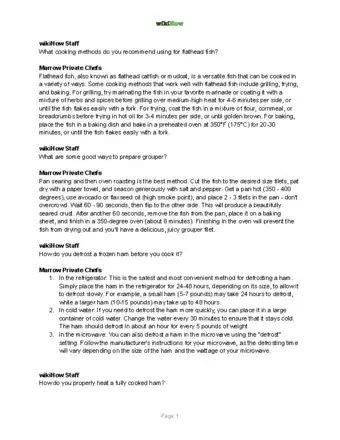
Thanks for reading our article! If you'd like to learn more about cooking flathead, check out our in-depth interview with Marrow Private Chefs.
References
- ↑ https://www.food.com/recipe/flathead-fillets-with-a-tarragon-butter-285293
- ↑ https://www.food.com/recipe/flathead-fillets-with-a-tarragon-butter-285293
- ↑ https://www.taste.com.au/recipes/flathead-crispy-potatoes/8b8368bd-c50c-4f36-a5ff-80cc87c74517
- ↑ https://www.delicious.com.au/recipes/flathead-cherry-tomato-sauce/04b2f312-9654-4f7b-9831-9e4edafd0489
- ↑ https://www.bobvila.com/articles/how-to-put-out-a-grease-fire/
- ↑ https://www.delicious.com.au/recipes/flathead-cherry-tomato-sauce/04b2f312-9654-4f7b-9831-9e4edafd0489
- ↑ https://www.foodsafety.gov/food-safety-charts/safe-minimum-cooking-temperature
- ↑ https://www.food.com/recipe/flathead-fillets-with-a-tarragon-butter-285293
- ↑ https://ask.usda.gov/s/article/How-long-can-you-keep-cooked-fish-in-the-refrigerator
- ↑ https://www.goodfood.com.au/recipes/baked-flathead-with-prosciutto-tomato-and-parsley-20140106-30d1u
- ↑ https://www.abc.net.au/life/easy-fish-tacos-with-cabbage-slaw-recipe/11464800
- ↑ https://www.bigoven.com/recipe/baked-flathead-with-iceberg-lettuce-salad/383542
- ↑ https://www.bigoven.com/recipe/baked-flathead-with-iceberg-lettuce-salad/383542
- ↑ https://www.abc.net.au/life/easy-fish-tacos-with-cabbage-slaw-recipe/11464800
- ↑ https://www.foodsafety.gov/food-safety-charts/safe-minimum-cooking-temperature
- ↑ https://www.bigoven.com/recipe/baked-flathead-with-iceberg-lettuce-salad/383542
- ↑ https://ask.usda.gov/s/article/How-long-can-you-keep-cooked-fish-in-the-refrigerator
- ↑ https://www.gourmettraveller.com.au/recipes/chefs-recipes/grilled-fish-tacos-7640
- ↑ https://placeswego.com/recipe-crumbed-flathead-tails/
- ↑ https://placeswego.com/recipe-crumbed-flathead-tails/
- ↑ https://placeswego.com/recipe-crumbed-flathead-tails/
- ↑ https://www.womensweeklyfood.com.au/recipes/paprika-flathead-with-roasted-capsicum-sauce-3251
- ↑ https://placeswego.com/recipe-crumbed-flathead-tails/
- ↑ https://www.foodsafety.gov/food-safety-charts/safe-minimum-cooking-temperature
- ↑ https://placeswego.com/recipe-crumbed-flathead-tails/
- ↑ https://ask.usda.gov/s/article/How-long-can-you-keep-cooked-fish-in-the-refrigerator
- ↑ https://www.foodsafety.gov/food-safety-charts/safe-minimum-cooking-temperature
